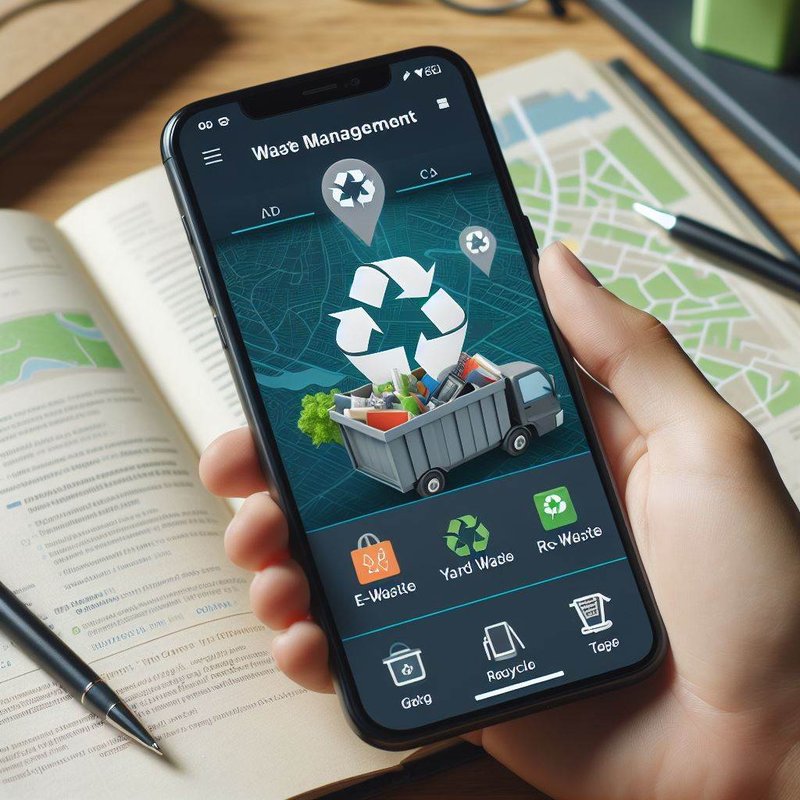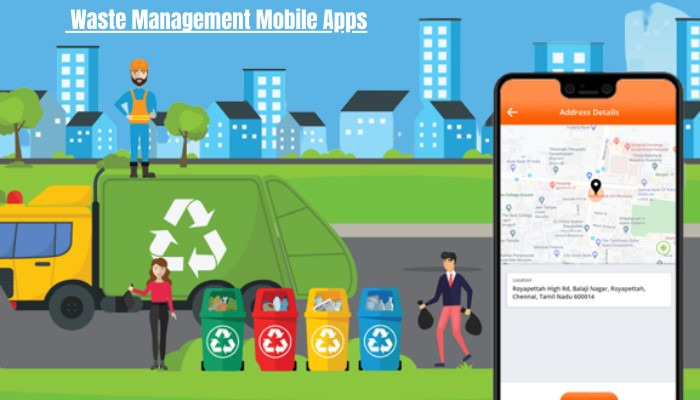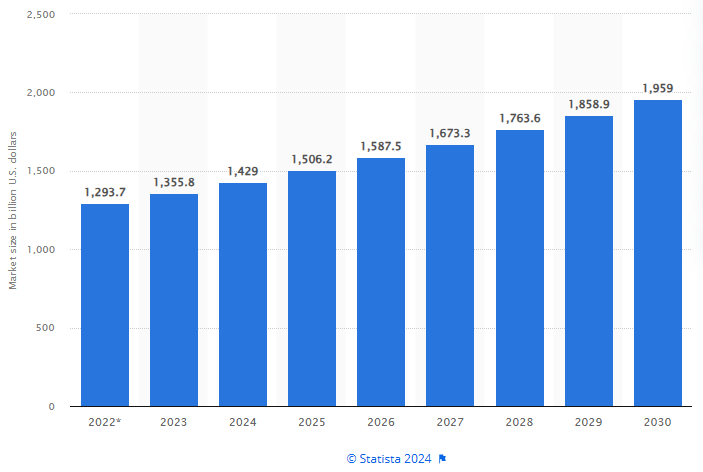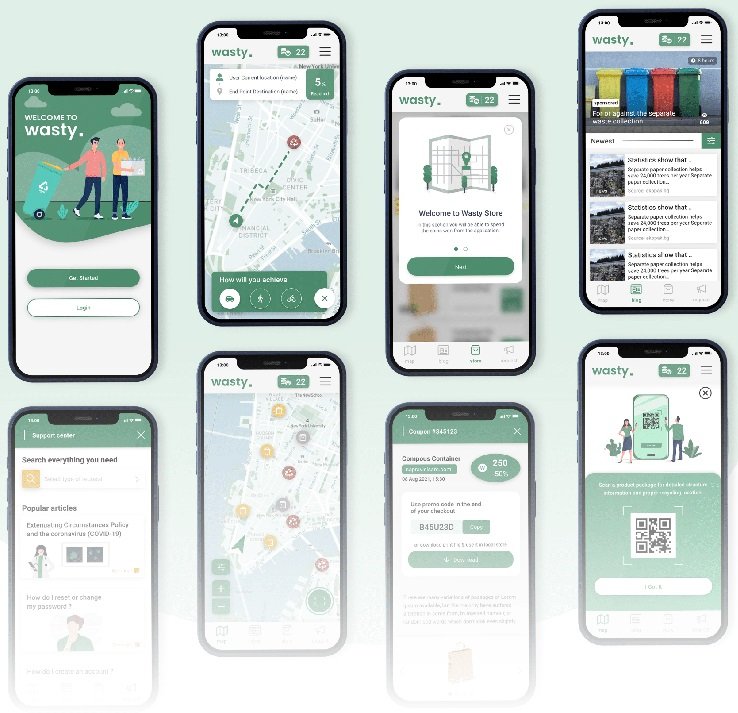Smart Waste Management App with Artificial Intelligence.
In today's world, where sustainability is a top priority, waste management is no longer just about collecting trash. It's about implementing efficient systems that minimize environmental impact and promote responsible resource utilization. Here's where Waste Management Apps powered by Artificial Intelligence (AI) are making a significant difference.
These innovative mobile applications are revolutionizing the waste collection industry by streamlining operations, optimizing resource allocation, and fostering better engagement between waste management companies, residents, and businesses.

This blog post dives deep into the world of waste management apps, exploring their functionalities, the power of AI integration, and the various ways they are transforming waste collection.
Understanding Waste Management: A Diverse Classification System
Waste management encompasses the collection, transportation, treatment, and disposal of various waste materials. A well-structured waste management system is crucial for maintaining public health, environmental well-being, and resource conservation.
Here's a breakdown of the diverse waste categories typically managed by waste collection services:
- Solid Waste: This refers to everyday non-liquid waste generated from households, commercial establishments, and industrial activities. Examples include food scraps, paper products, plastic containers, yard waste, and bulky items.
- Liquid Waste: This category includes wastewater from households, industries, and agriculture. Liquid waste treatment facilities process this waste to minimize its environmental impact before releasing it into waterways.
- Hazardous Waste: Hazardous waste materials pose a significant threat to human health and the environment due to their toxic, flammable, corrosive, or reactive properties. Examples include used batteries, paint thinners, pesticides, and electronic waste (e-waste). Special handling and disposal procedures are required for hazardous waste.
- Organic Waste: Organic waste comprises biodegradable materials derived from plants and animals, such as food scraps, yard trimmings, and paper products. Organic waste can be composted or converted into biogas through anaerobic digestion, offering valuable resources.
- Recyclable Waste: Certain types of solid waste, such as paper, plastic, glass, and metal can be reprocessed into new products, reducing reliance on virgin resources. Effective waste management systems encourage recycling through designated collection bins and educational programs.
Also, read about Urban Mobility Unlocked: Smart Car Parking Finder Apps

Key Market Trends & Takeaway for Waste Management Solutions:
The global waste management industry is experiencing significant growth, driven by several key factors:
- Rising Urbanization: The rapid growth of urban populations worldwide leads to a corresponding increase in waste generation. Efficient waste management systems are crucial for maintaining sanitation and public health in densely populated areas.
- Growing Environmental Concerns: The environmental impact of improper waste disposal, including pollution of waterways and landfills, is a growing concern. Waste management solutions that promote recycling, composting, and waste-to-energy conversion are gaining traction.
- Increasing Stringent Regulations: Governments worldwide are implementing stricter regulations to promote responsible waste management practices. These regulations often mandate waste diversion targets, such as increased recycling rates, to reduce reliance on landfills.
- Technological Advancements: The emergence of AI-powered waste management apps offers innovative solutions for optimizing waste collection routes, improving waste sorting accuracy, and promoting resident engagement.
According to Statista, the global waste management market size was valued at USD 1.3 trillion in 2022 and is expected to reach USD 1.9 trillion by 2030, registering a compound annual growth rate (CAGR) of 5.4% from 2023 to 2030.

Why Smart Waste Management is the Future: Embracing Efficiency and Sustainability
Smart Waste Management Solutions powered by AI and other innovative technologies address these limitations by introducing a data-driven approach to waste collection. Here's how:
- Real-time Bin Monitoring: Smart bins equipped with sensors can transmit data on fill levels, allowing for dynamic route optimization and collection only when necessary. This reduces unnecessary vehicle trips, lowers fuel consumption, and minimizes emissions.
- Improved Resident Communication: Waste management apps provide residents with personalized information on collection schedules, sorting guidelines, and recycling initiatives. This fosters engagement and empowers residents to actively participate in responsible waste management practices.
- AI-powered Waste Sorting: Image recognition technology integrated into waste collection vehicles or smart bins can automatically identify and categorize waste materials. This improves sorting accuracy, reduces contamination in recycling streams, and optimizes resource utilization.
- Data-Driven Decision Making: Waste management apps collect and analyze vast amounts of data on waste generation, collection patterns, and resident behavior. This data empowers stakeholders to make informed decisions regarding route optimization, resource allocation, and the development of targeted educational programs.
Also, read about the Smart Factory App Revolution
Types of Waste Management Apps: Tailored Solutions for Diverse Needs
The world of waste management apps extends beyond a one-size-fits-all approach. A variety of app types cater to specific needs within the waste management industry. Here's a look at some of the most common categories, along with real-world examples to illustrate their functionalities:
- Waste Recycling Apps: These resident-focused apps provide information on proper sorting techniques for different waste materials. They may also include features like collection schedule reminders, location information for recycling centers, and gamified elements to encourage responsible recycling habits.
- Real-world Example: RecycleNation (Android, iOS): This app helps users identify recyclable materials in their area, locate nearby recycling centers, and earn points for responsible recycling habits, which can be redeemed for rewards.
- Food Waste Reduction Apps: With a growing focus on reducing food waste, these apps offer tips for meal planning, proper food storage, and creative ways to utilize leftovers. They may also connect users with local food donation programs or composting initiatives.
- Real-world Example: Too Good To Go (Android, iOS): This app connects users with restaurants and grocery stores that have surplus food approaching its expiry date. Users can purchase discounted "magic bags" of food, reducing food waste and saving money.
- Waste Tracking Apps: These apps, often used by businesses or waste management companies, track the movement and disposal of waste materials. This can be particularly important for hazardous waste, where regulations mandate proper documentation and tracking. Some waste tracking apps can integrate with RFID tags attached to bins or waste containers for automated tracking and reporting.
- Real-world Example: WasteTrack (Web-based): This comprehensive waste tracking solution allows businesses to track waste generation, schedule pickups, and generate reports for waste disposal compliance. It can also integrate with RFID tags for automated bin tracking and weight measurement.
- Asset Maintenance & Management Apps: Waste collection relies on a fleet of vehicles and equipment. These apps streamline maintenance processes by scheduling preventive maintenance, tracking equipment performance, and managing spare parts inventory. This helps ensure the smooth operation of waste collection services.
- Real-world Example: Verizon Connect (Web-based, Mobile): This fleet management app offers a suite of features for waste collection companies, including vehicle tracking, fuel usage monitoring, and preventative maintenance scheduling. It helps optimize routes, reduce fuel costs, and minimize downtime for collection vehicles.
- Recycling E-waste Apps: Electronic waste (e-waste) disposal requires specific handling due to potentially hazardous materials. E-waste recycling apps help users locate authorized e-waste collection points and provide information on responsible disposal practices.
- Real-world Example: Earth911 (Web-based, Mobile): This comprehensive recycling resource directory allows users to search for authorized e-waste collection locations by zip code. It also provides information on different types of e-waste and responsible disposal practices.
- Hazardous Waste Management Apps: These apps offer crucial guidance for the safe handling and disposal of hazardous materials like chemicals, paints, and batteries. They may include features like waste identification tools, information on regulations and permits, and location-based searches for authorized hazardous waste disposal facilities.
- Real-world Example: Safe Disposal (Android, iOS): This app helps users identify hazardous materials in their household, locate authorized hazardous waste disposal facilities, and provide information on safe handling and storage procedures.
- Weighbridge Management Apps: For facilities that handle large volumes of waste, weighbridge management apps automate the weighbridge process. These apps record the weight of incoming and outgoing waste, calculate disposal fees, and generate reports for billing and regulatory compliance purposes.
- Real-world Example: Truckweigh(Web-based): This weighbridge management system automates weight recording, calculates disposal fees based on waste type and weight, and generates reports for billing and compliance purposes. It also integrates with access control systems to manage vehicle entry and exit at waste disposal facilities.
Also, read about Revolutionize App Development with Artificial Intelligence
Essential Features for a Waste Management App: Empowering Efficiency and User Engagement
Waste management apps offer a range of functionalities that can significantly improve waste collection operations and resident engagement. Here's a breakdown of some essential features to consider when developing a waste management app:

- Waste Compliance:
- Provide users with easy access to information on local waste management regulations, including accepted recyclables, proper disposal procedures for hazardous waste, and any restrictions on waste types or quantities.
- Offer in-app tools or resources to help users identify and classify waste materials correctly, ensuring compliance with regulations and reducing contamination in recycling streams.
- Waste Classification:
- Integrate an image recognition system that can identify different types of waste materials from photos uploaded by users. This can be particularly helpful for users unsure about how to classify specific items.
- Smart Bin Locator:
- Leverage geolocation services to allow users to locate the nearest recycling centers, drop-off points for specific waste types (e.g., e-waste, yard waste), or hazardous waste disposal facilities.
- Integrate real-time availability information for certain facilities (e.g., indicating if a hazardous waste collection center is currently accepting drop-offs) to enhance user experience.
- Bin Filling Cycle:
- Implement sensor technology integrated into smart bins to monitor fill levels in real-time. This data can be used to:
- Optimize collection schedules by prioritizing overflowing bins and avoiding unnecessary pickups for partially full bins.
- Predict bin fullness and send alerts to waste collection crews for proactive waste collection.
- Implement sensor technology integrated into smart bins to monitor fill levels in real-time. This data can be used to:
- Bin Inventory:
- Maintain a digital inventory of bins within the collection area. This can include details like bin location, type (recycling bin, household waste bin, etc.), and assigned collection schedule.
- This data can be used for route planning, ensuring all designated bins are included in collection routes, and can help troubleshoot any issues with missing or misplaced bins.
- Real-Time Data:
- Collect and analyze real-time data from various sources, including bin fill levels, GPS location of collection vehicles, and traffic conditions.
- Utilize this data for dynamic route optimization, ensuring the most efficient collection routes and minimizing fuel consumption.
- Scheduled Pickups:
- Allow users to view their personalized collection schedule for different waste types within the app.
- Enable push notifications or email reminders to alert users about upcoming collection days to prevent missed pickups.
- Pick Evaluation:
- After a collection is complete, allow residents to provide feedback on the service through the app. This feedback can be used to evaluate collection efficiency and identify areas for improvement.
- Notifications and Alerts:
- Send real-time notifications to users about collection schedule changes, service disruptions due to unforeseen circumstances, or reminders about proper waste sorting procedures.
- Alerts can also be sent to waste management crews regarding overflowing bins requiring immediate attention.
- Predictive Analysis:
- Utilize historical data on waste generation patterns, weather conditions, and bin fullness cycles to predict future waste volumes and optimize collection schedules proactively.
- Cost Calculation:
- Develop features that allow businesses or organizations to estimate waste disposal costs based on projected waste volumes and disposal fees.
- Optimization of Waste Collection Route:
- Leverage real-time data on bin fullness, traffic conditions, and weather to dynamically optimize collection routes. This ensures the most efficient use of resources, minimizes travel time, and reduces fuel consumption.
- Image Recognition for Contamination:
- Integrate image recognition technology within waste collection vehicles or at sorting facilities. This technology can automatically identify contaminated materials in recycling loads, allowing for targeted intervention and improving the quality of recyclable materials.
- Feedback and Improvement System:
- Implement a user feedback mechanism within the app to gather valuable insights from residents and businesses. This feedback can be used to identify areas for improvement, prioritize feature development, and ensure the app remains user-friendly and meets evolving needs.
- Real-time analytics & reporting:
- Generate comprehensive reports that provide insights into waste generation patterns, recycling rates, collection efficiency, and user engagement. This data empowers waste management companies to make informed decisions for service optimization and resource allocation.
- Chat Support:
- Offer an in-app chat support feature to allow users to connect with customer service representatives for real-time assistance with using the app, reporting service issues, or inquiries about waste disposal procedures.
- Live Collection Updates:
- Provide users with the ability to track the location of collection vehicles in real time. This can be particularly helpful for residents who want to know when to expect collection crews to arrive in their neighborhood.
Also, read about AI-Infused Mobile App Development 2024
How to Develop a Waste Management App: A Step-by-Step Guide
The growing demand for efficient and sustainable waste management solutions has fueled the development of customized waste management apps. If you're considering creating a custom app for your waste collection business or municipality, here's a breakdown of the key development stages:
Choose a Suitable App Type:
Waste management apps cater to various needs. Here are some common types to consider:
- Residential Waste Collection Apps: These apps focus on facilitating communication and service management for residents. Features include collection schedule reminders, bin location information, and waste sorting guidelines.
- Commercial Waste Collection Apps: These apps cater to the specific needs of businesses and organizations, often offering features like bin-level monitoring, customized waste pickup schedules, and real-time reporting.
- Hazardous Waste Management Apps: These apps provide information on proper disposal procedures for hazardous materials, locate collection facilities, and may even incorporate features for waste tracking and documentation.
Select Features and Tech Stack:
Once you've chosen the app type, identify the specific features that cater to your target audience and business goals. Here are some core functionalities to consider:
- User Authentication and Management
- Geolocation Services
- Push Notifications
- Real-time Data Integration (for features like bin-level monitoring)
- Payment Gateway Integration (for in-app transactions)
- Data Analytics and Reporting Tools
The chosen tech stack, which refers to the programming languages, frameworks, and tools used for development, will depend on the specific features and functionalities you select. Popular options for waste management app development include:
- Programming Languages: Swift (iOS), Kotlin (Android), React Native (cross-platform)
- Frameworks: Flutter (cross-platform), Node.js (backend development)
- Databases: Cloud-based databases like Firebase or AWS DynamoDB offer scalability and security.
Also, read about Cross-Platform App Development
Find a Reputable Developer:
Developing a robust and user-friendly waste management app requires expertise in mobile app development and an understanding of the waste management industry. Here are some tips for finding a qualified developer:
- Look for experience in developing waste management apps or similar solutions.
- Review their portfolio and case studies to assess their expertise in relevant technologies.
- Communicate your project vision clearly and ensure the developer understands your business goals.
- Get quotes from multiple developers and compare their rates and development timelines.
Agile Development Methodology:
The Agile development methodology is a popular approach for app development. It involves iterative development cycles where features are built, tested, and refined in short sprints. This allows for continuous feedback and ensures the app meets your evolving needs.
Importance of Thorough Testing:
Rigorous testing is crucial before launching your waste management app. Testing should encompass functionality, performance, security, and user experience across different devices and operating systems. Beta testing with a select group of users can also provide valuable feedback before a wider release.
Cost of Developing a Custom Waste Management App
Developing a custom waste management app requires an investment, but the potential return on that investment can be significant. Here's a breakdown of how much you can expect to spend, depending on the features and complexity of your app:
Building Your Budget:
Just like any construction project, building a waste management app involves various factors that influence the overall cost. These include:
- App Complexity and Features: The more features you include, like real-time bin monitoring or dynamic route optimization, the higher the development cost. A simple app with basic functionalities like collection schedules will be significantly cheaper.
- App Platform: Developing a native app specifically for iOS or Android will generally cost more than a cross-platform app that can run on both operating systems. However, native apps may offer a smoother user experience.
- Development Team Location: Hiring developers in regions with lower hourly rates can reduce development costs. But keep in mind potential communication challenges and time zone differences.
- Project Duration: The total development time will significantly impact the overall cost. Clearly defined project scope and functionalities can help streamline development and keep costs in check.
What Can You Expect to Pay?
Here's a general idea of the cost range based on the level of features you include:
- Basic App (Minimal Features): $20,000 - $50,000
- This range covers a basic app with functionalities like waste pickup schedules, user registration, and basic information on sorting guidelines.
- Advanced Features: $50,000 - $120,000
- This range includes apps with more advanced features like GPS tracking for collection vehicles, in-app payment options, and image recognition for waste sorting assistance.
These figures provide a starting point, and the actual cost may vary depending on your specific needs. To get a more accurate quote, it's recommended to discuss your project requirements with a reputable mobile app development company. They can provide a customized quote based on the functionalities you want and the level of complexity involved.
Also, read about Strategies for Economical Mobile App Development
Monetization Strategies for Waste Management Apps
There are several ways waste management apps can generate income, depending on the target user base and the functionalities offered:
- Commercial Users (Waste Management Services for Businesses):
- Subscription fees: Offer tiered subscription plans with varying features for businesses. Basic plans could include collection scheduling and bin level monitoring, while premium plans could provide real-time route tracking, detailed waste generation reports, and customized waste disposal solutions.
- Pay-per-use model: For businesses with fluctuating waste volumes, a pay-per-use model can be implemented. This allows businesses to only pay for the waste they generate, with charges based on bin collections or total weight disposed of.
- Residential Users (Household Waste Collection App):
- Freemium model: Offer a basic app with essential features like collection schedules and sorting guidelines for free. Freemium apps can then generate revenue through in-app purchases for premium features like additional bin collection requests, bulky waste disposal scheduling, or access to exclusive discounts from waste reduction partners.
- Local and Government Bodies (Smart City Waste Management Solutions):
- Partner with local municipalities: Develop customized waste management solutions for cities or government agencies. These solutions could include features like real-time bin monitoring for optimized collection routes, resident education modules for improved recycling rates, and data analytics to identify areas for waste reduction initiatives.
- In-App Purchases (Freemium Waste Management App):
- As mentioned in the residential user section, freemium apps can offer additional features or services as in-app purchases. This could include one-time purchases for permanent upgrades or recurring subscriptions for ongoing premium services.
- Data Analytics (Waste Management Data Insights):
- Waste management apps collect valuable data on waste generation patterns, recycling rates, and resident behavior. This anonymized data can be a valuable asset for waste management companies, recycling facilities, and environmental research organizations. By offering access to this data through secure dashboards or reports (for a fee), waste management app developers can generate additional revenue.
- Sponsored Content (Waste Management App Marketing):
- Partner with companies that offer products or services related to waste reduction or recycling. Sponsored content within the app could include targeted ads for recycling bins, compostable products, or waste-to-energy solutions. However, it's crucial to ensure that sponsored content is relevant and adds value to the user experience, avoiding overwhelming users with irrelevant advertisements.
Conclusion: Embracing Technology for a Sustainable Future
The growing demand for sustainable solutions is driving the adoption of innovative technologies across industries. Waste management apps are at the forefront of this movement, empowering businesses, residents, and local governments to work collaboratively towards a more efficient, environmentally responsible waste management system for the future.
By leveraging the power of waste management apps and embracing technological advancements, we can create a cleaner, greener future for generations to come.
Call to Action
Decodermind can help you develop a custom waste management app that meets your specific needs and goals. Our team of experienced developers and industry experts can guide you through every stage of the development process, from initial concept to launch and beyond.
Visit our App Development Services page to learn more about how we can help you.
Together, let's build a smarter, more sustainable future for waste management.

 Hamid Salman
Hamid Salman